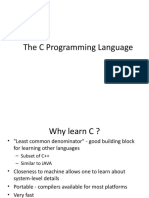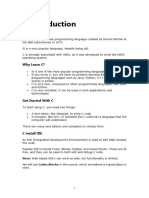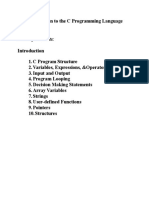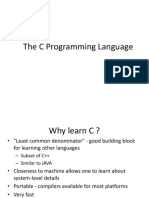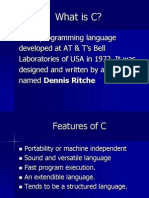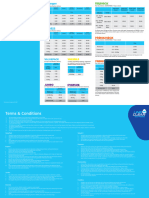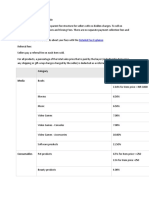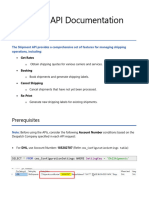0% found this document useful (0 votes)
9 views37 pagesSlide 2 C Fundamentals
The document provides an introduction to C programming fundamentals, including writing a simple program, compiling and linking processes, and using the GCC compiler. It covers key concepts such as directives, functions, statements, variables, and input/output operations, along with examples for clarity. Additionally, it discusses best practices for naming identifiers and constants in C programming.
Uploaded by
Tamjidur RahmanCopyright
© © All Rights Reserved
We take content rights seriously. If you suspect this is your content, claim it here.
Available Formats
Download as PDF, TXT or read online on Scribd
0% found this document useful (0 votes)
9 views37 pagesSlide 2 C Fundamentals
The document provides an introduction to C programming fundamentals, including writing a simple program, compiling and linking processes, and using the GCC compiler. It covers key concepts such as directives, functions, statements, variables, and input/output operations, along with examples for clarity. Additionally, it discusses best practices for naming identifiers and constants in C programming.
Uploaded by
Tamjidur RahmanCopyright
© © All Rights Reserved
We take content rights seriously. If you suspect this is your content, claim it here.
Available Formats
Download as PDF, TXT or read online on Scribd
/ 37






